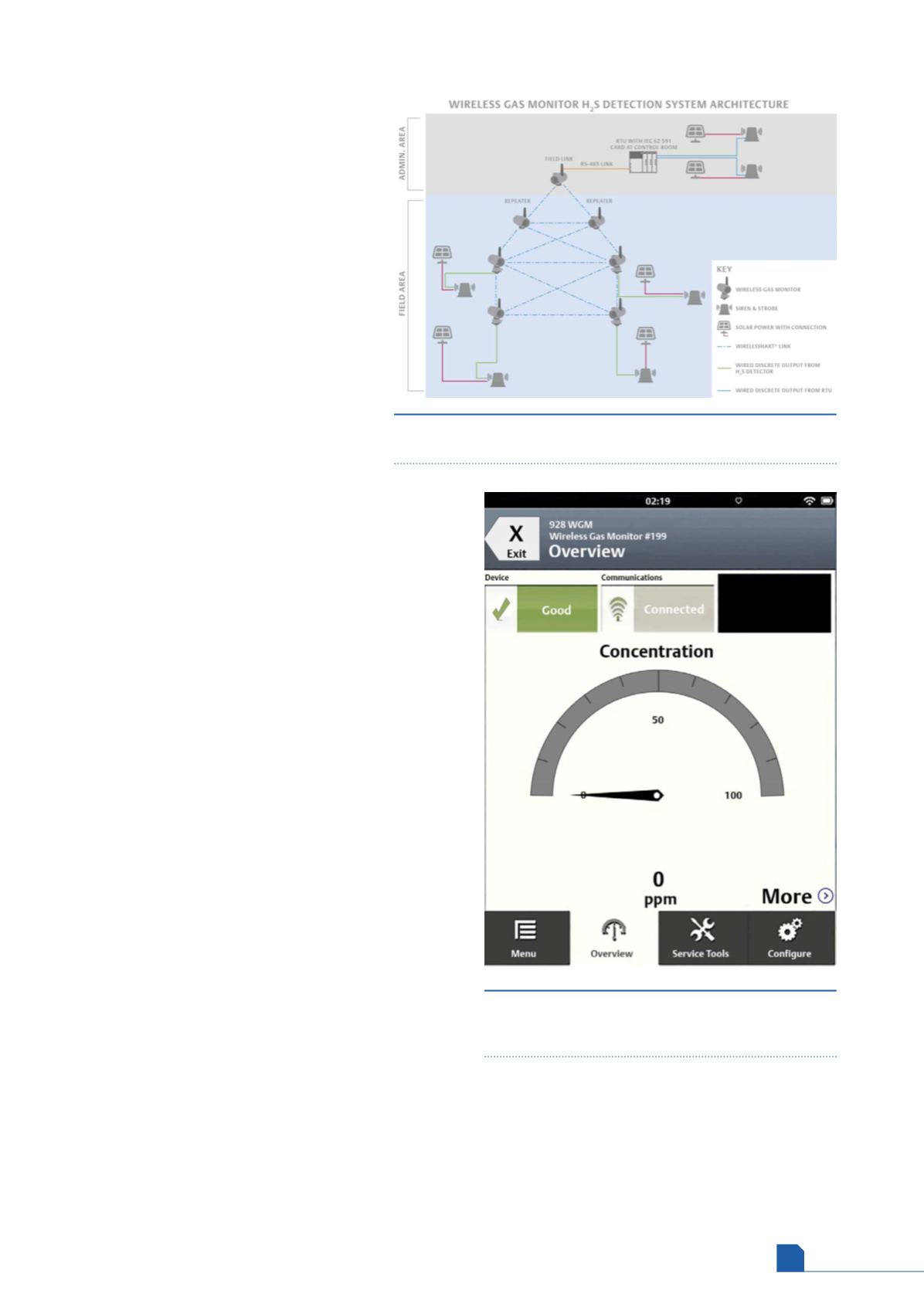
July
2020
HYDROCARBON
ENGINEERING
61
Better location infrastructure
One alternative is to use a different approach
altogether, extending the wireless infrastructure
many plants have already deployed. The same
WirelessHART
TM
network used to support process
instrumentation can also be the foundation for
creating the coverage needed for an effective
location system.
Creating a location system using WirelessHART
involves more than adding new process instruments
to the network. The location triangulation
functions operate with a different type of device
called a location anchor.
These communicate with each other and the
WirelessHART gateways and access points similar
to conventional WirelessHART instrument
transmitters (Figure 3). Anchors communicate with
the location tags that individual workers wear in
the plant environment, and they provide the means
to triangulate and determine where each
tag/worker is located.
Location anchors are small, light, and self-powered, and are
therefore easy to install without any additional wiring. Their
Class 1/Div 1, Zone 0 rating allows them to be deployed
throughout process plant environments. With a long battery
life, they require very little maintenance. They are economical
enough to increase visibility into personnel status, especially
when and where a plant needs themmost.
The corresponding rechargeable tags worn by each worker
communicate with the anchors using 2.4 GHz, and the anchors
communicate with each other and the access points using
WirelessHART. The network is self-organising, and it can adapt
to changing conditions without manual intervention.
Using this approach typically cuts the cost of implementing
a new system by half when compared to a comparable Wi-Fi
deployment. It is easily scalable to accommodate the number
of employees in a given plant, plus it has the ability to create
the kind of three-dimensional resolution desired in critical areas
of a plant. Since location anchors are fully wireless, they can be
moved if necessary, or additional units can be easily deployed
to improve network performance. This capability provides the
high level of flexibility needed to achieve the required coverage
and ensure worker safety.
The software platform necessary to support such a
deployment does not have to be created from scratch. Features
such as geofencing, mustering, and safety alerts are
pre-configured and packaged together, making it a streamlined
and user-friendly solution (Figure 1).
Toxic gas monitoring
As mentioned earlier, the idea of using a wireless network to
perform safety functions is still not widely accepted, but
some things that appear to be safety functions are not.
Consider toxic gas monitoring, which in the oil and gas
industry generally begins with hydrogen sulfide (H
2
S). Most
facilities in the full upstream to downstream production chain
deal with H
2
S to some extent, so there is the potential for a
release, which carries a very serious threat for workers. Some
detection method is necessary to protect people who could
be affected.
Strictly speaking, this is a monitoring effort rather than a
safety instrumented function, since there is no automated
process-related response, such as adjusting a valve to correct
an overpressure incident. The response to a toxic gas release is
typically to sound an alarm for workers in the area and to
inform operators that something is likely wrong in the plant
that is causing the release. It may create awareness of a
Figure 4.
WirelessHART toxic gas monitors can be added to the
network, just like any other wireless field instrument.
Figure 5.
Pre-configured dashboard graphics make
the monitoring software easy to set up and with clear
indications to operators if conditions change.








